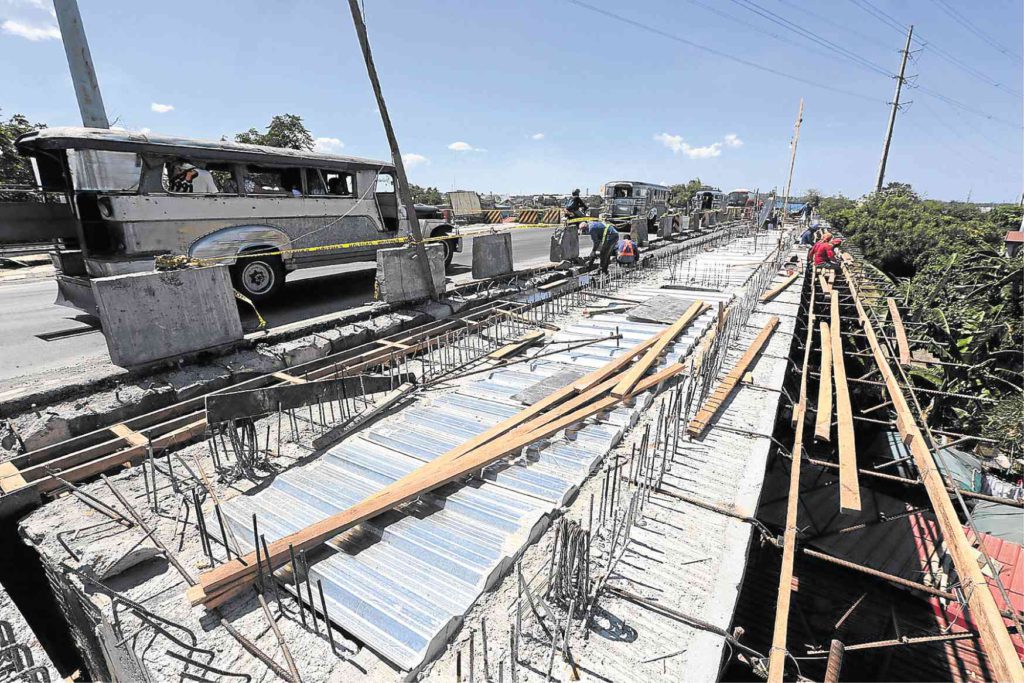How to delay a gov’t infra project in Philippines

POORLY PLANNED The P71.7-million bridge-widening project in San Pedro, Laguna, was supposed to have been completed in November 2016. This is how it looks, as of last week. —GRIG C. MONTEGRANDE
SAN PEDRO, Mar 3, 2019, The Inqiurer. The people of San Pedro City in Laguna were promised a wider bridge between the barangays of San Antonio and San Vicente by the end of 2016. But today, more than three years after the project contract took effect, construction is still ongoing, reported The Inqiurer.
Absence of proper planning by the project’s implementing office, the Department of Public Works and Highways (DPWH) in Region IV-A, and lack of coordination with other agencies are the clear reasons for the long delay, according to San Pedro City Administrator Filemon Sibulo.
The 200-meter bridge, known locally as San Isidro Bridge after the river that runs below it, connects the city boundaries of Muntinlupa and San Pedro to the latter’s town proper. It is part of a main route traveled daily by San Pedro residents.
The widening of the bridge from two to four lanes was planned to ease traffic. The work that began on Jan. 26, 2016, was scheduled for completion on Nov. 21 of the same year.
But on both bridge approaches stood tamarind, kamagong and ipil trees, among others. Clearing these required a permit from the Department of Environment and Natural Resources (DENR).
Below the bridge was a railroad owned by the Philippine National Railways (PNR), which claimed that the DPWH and the project contractor, VR Patron Builders and Developers Corp., were operating within its right of way. Thus, construction was deferred until the DPWH got a permit to enter and work in the area.
There were also some 50 informal-settler families living under the bridge, as well as a gas pipeline owned by First Philippine Industrial Corp. and a high-tension wire of the National Grid Corp. of the Philippines.
After the fact
All these issues were addressed and the necessary permits secured only after work on the P71.7-million project began.
“Isn’t it that before starting a project, all permits have to be secured first and not when the project is already in progress?” Sibulo told the Inquirer, adding that the right of way issue with the state-owned PNR should have been settled first.
But the matter was already settled given that the bridge is part of a national road, which is entitled to a 20-meter right of way, the DPWH argued.
“When the PNR saw us working, they claimed that they have right of way in the area,” said project engineer Melquiades Sto. Domingo. “But we thought: Our project is a bridge and we are just working within the right of way parallel to it.”
The issue was later resolved, with the PNR maintaining a 30-meter authority in the area, he said.
“From the very start, we saw there were obstructions,” Sto. Domingo said. “The [delay in cutting] trees affected the informal settlers, and then there was the issue with the PNR. All were contributing factors in the project’s delay.”
To compound matters, DPWH resident engineer Percival Rotas said, these issues coincided with major activities, such as building the bridge’s foundation.